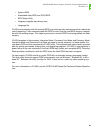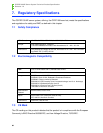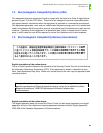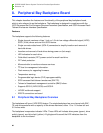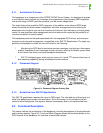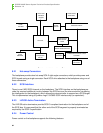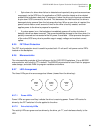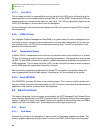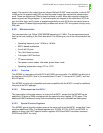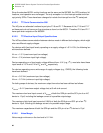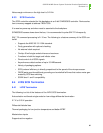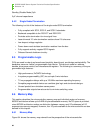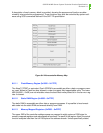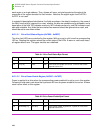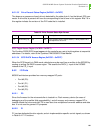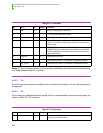
OCPRF100 MP Server System Technical Product Specification
Revision 1.0
95
supply. The second is the output from an onboard Dallas DS1233* reset controller, in which RST
is kept active for approximately 350 ms after the power supply has reached the selected toler-
ance. These two signals are ORed to keep the board in reset. When both signals indicate that
power is good, two things happen: 1) the reset signals are negated to the controllers, SCSI tar-
get, and other logic; and 2) power is applied sequentially to each SCA drive connector where a
drive is present. Onboard logic sequentially enables each drive’s FET drive power circuitry every
200 µsec.
8.3.2 Microcontroller
The microcontroller is a Philips* P80C652FBB operating at 12 MHz. The microprocessor boots
itself up via code residing in the Flash boot block. The following is a list of the microcontroller fea-
tures:
• Operating frequency from 1.2 MHz to 16 MHz.
• 80C51 based architecture.
• Four 8-bit I/O ports.
• Two 16-bit timer/counters.
• Full-duplex UART facilities.
• I
2
C serial interface.
• Two power control modes: idle mode, power-down mode.
• Operating temperature range: 0°C to +70°C.
8.3.2.1 Overview
The 80C652 is a derivative of the 80C51 8-bit CMOS microcontroller. The 80C652 contains all of
the features of the 80C51 (that is, the counter/timers T0 and T1, the serial I/O (UART), and four
8-bit I/O ports).
The 80C652 is pin-for-pin compatible and code compatible with the 80C51, except for additional
Vss pins at the QFP package.
8.3.2.2 Differences from the 80C51*
The organization of the data memory is similar to the 80C51, except that the 80C652 has an
additional 128 bytes of RAM overlapped with the special function register (SFR) space. This
additional RAM is addressed using indirect addressing only and is available as stack space.
8.3.2.3 Special Function Registers
The 80C652 special function register space is the same as that on the 80C51, except that it con-
tains four additional SFRs. The added registers are: S1CON, S1STA, S1DAT, and S1ADR. In
addition to these, the UART special function registers SCON and SBUF have been renamed
S0CON and S0BUF for clarity.



